Exclusive Interview: Final Destination 5 Director Steven Quale
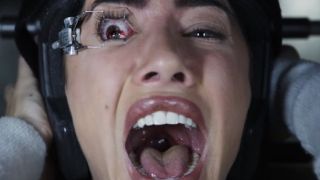
Thanks to its cleverness and willingness to let humor play alongside horror, the Final Destination franchise has given us a couple solid entries that are perfect to sit down with and enjoy on a Saturday afternoon. That said, in 2009 The Final Destination came out and practically destroyed all the good will that the previous movies had built up. It was completely devoid of any originality and took what was a fun concept and somehow managed to make it boring. With Final Destination 5 it was director Steven Quale’s job to get the franchise back on track.
Known to many as James Cameron’s protégé, Quale has worked on many incredible films, including The Abyss, T2: Judgement Day, True Lies and Titanic, and even worked as the visual effects supervisor and second unit director on Avatar. The fifth installment of the Final Destination series, however, marks his feature film debut and this past weekend I had the good fortune to sit down with him one-on-one and talk about his experience. Check out the interview below in which the filmmaker discusses his preparation process, the development of the film’s 3D and how he actually had to stop himself from ragging on the fourth film.
You obviously have a wealth of experience, you’ve been working on films for a long time. This is your first feature, I’m curious, during production, was there ever any point where you actually felt like a first time director?
It’s funny you mention that, but actually, no. I don’t want to appear egotistical or arrogant, but I had been doing this for so long, I actually directed a TV movie for ABC called Superfire, which was a four hour miniseries, so I had dealt with the casting process, the whole thing. It was just on a TV level versus the feature level, so the answer to your question is no.
Coming from such a technical background, would you say that you put more emphasis on character and story when you were approaching the material?
Well, it’s interesting that you mention that because, though I come from a technical background, I come from a filmmaker who embraces the technology, because unlike other stunt coordinators who became second unit directors, I became a second unit director and a filmmaker first. I went to film school and then I worked with Jim Carmeron, and I segued into second unit as I was working on creating concepts and previews for films. So I have a different direction in the sense that all of the second unit that I worked on was technical, but it was more, what are the characters feeling and how can I elevate the story? How do my shots contribute to the stories and the character and the process? As opposed to just cool action. So I kind of had a different direction in that sense. But yes, absolutely, I think one of the key things for a director is to not be laser focused on one tiny aspect, like the action or the 3D or the stunts, but you have to have the whole picture involved and look at all aspects, because any one thing that isn’t done in a professional manor or in an aesthetic manor that works will cause the rest of the film to suffer, and I think that’s the key. So we paid a lot of attention on the cast, and we paid a lot of attention on the script, the story, the characters, the staging, making it believable, all of that.
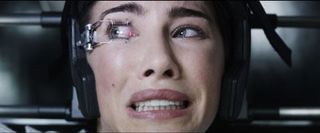
Talking about the casting, one of the things I really love about this movie and the franchise in general is that it really is very funny and the casting is part of it. You have David Keochner, Miles Fisher, you have a lot of people who come from a comedic background. Where does the horror and comedy blend for you?
CINEMABLEND NEWSLETTER
Your Daily Blend of Entertainment News
That’s a tough line and balance to have. I looked at all four of the films before I started this and said, well, what works and what doesn’t. I thought the tone of the first one worked very well, the sort of scary suspense, but it didn’t have a lot of humor. The second one had a lot of humor but it maybe was going to far at times, and then the later ones just kind of kept going more and more absurd. So I said, if we could organically combine those too, the first and the second, and at the same time keep that balance and have the humor be character-driven, not camp-driven, then that was an intentional direction that I felt if we get actors that are really good actors to begin with, first and foremost, but have comedic sensibilities, then they can organically incorporate the humor into the film and it will play much better than trying too hard.
I guess a perfect example would be Miles, his character, Peter, really goes though the biggest emotional arc. For that character, what were you looking for?
Well we looked at tons and tons of auditions for that and Miles just stood out because he nailed that scene. The scene with the boss where he has to talk about rationalizing what’s happening. There was an intensity that I believed that this guy could actually convince himself that, “I have to do this.” It’s one of the more challenging aspects for the actor to actually do that in the end of this film, that transformation that he makes, and his audition tape just convinced me. I was like, this guy, I buy, there’s a reality to it and there was an energy to his performance that the other actors didn’t have necessarily. That’s really what convinced me that he would be good for that part.
Just going further with that idea, this film, especially versus the fourth one which really, let’s face it, is not a good movie.
At a certain point with the filmmakers I kept ragging on the fourth one, until I finally said, “Okay, new rule. I am not going to say bad things about the fourth movie because that’s all I do now.” It did kind of derail.
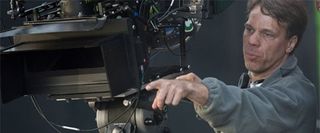
It really does, it’s a sharp contrast between these films and it’s also why I really liked it so much. This one really does have that cleverness that the last one lacked. I’m curious, how much of that was from the page, how much of it came when you were on the day?
It was a combination. Eric [Heisserer] did a really good job with the script, and at the same time, the actors, I mean, David Koechner improved some of the hysterical lines that the cast, when we did it, were just cracking up after we yelled cut. They just couldn’t believe it, when Dennis first comes and he’s like, “What’s my name?” and then he’s like, “Dennis. Look away.” That whole scene, that was on the day. And he didn’t tell us he was going to do that. We roll cameras and it happened and everyone was cracking up afterward. So that was a joy. But there were others that were very scripted and delivered and we knew they would get a laugh and we worked really hard with that. But trying to keep the tone, one of the things I kept doing was I kept reigning everyone in. They wanted to go wild with their comedic things and take it to that level and really make people laugh, and I said, “They’ll laugh just as much if we tone it down and make it a little more believable a real.” And so that was just the concert conductor making sure that all things flow, that’s my job when I’m dealing with the actors.
What is your pacing like? How fast do you prefer to work? How many takes do you generally shoot?
I love to shoot as few takes as necessary to accomplish what you need. On the flip side, I’m also an editor and so I know how valuable it is to get coverage and get everything you need, and so I will shoot as much as I can shoot in the time allotted that we have. So making, being smart about what you need. Obviously in an action sequence you need a ton of coverage, it’s just a technical thing, you’re getting all the angles. But when you’re doing a fun sequence with a couple of funny actors that are saying some lines, you just want to make sure you don’t miss anything, and cover it in a way that you can deal with the editing process to enhance the moments if necessary.
In terms of your organizational process, everyday do you come to set with everything drawn out?
I think as a director, a good director at least, I don’t know any other way of doing this but it’s the way I do it, you have to come prepared. If you don’t come prepared and do your homework, you’re just doing a disservice to your entire crew and production. So everyday I read the script and the pages that we’re going to shoot and come up with my shot list. You create a shot list for your assistant director so he can organize the day and figure out the logistics of everything, because it’s so challenging to move trucks. If you shoot one scene in this direction, all your movie trucks are here, so after lunch you have to move them all. That’s a huge process. You can’t just, on a whim, say, “Oh, we’ve got to switch and do that way.” So you’ve got to come up with what your coverage is and work with your cinematographer. Having been a cinematographer myself, I’m very versed in that aspect, so it’s a shorthand, so I know exactly what the angles we have and what we need. So I come pretty prepared and planned. But what you can’t do is you can’t force that onto the cast. The cast has to have the blocking and the staging has to feel organic and natural to them. So you do a rehearsal with them and you figure out how this works, and you figure out where the cameras needs to go, and that judges how much your day is going to be. At the same time, you might have an idea, “Well it would be great to have them like this,” but then you have to convince the cast that’s what would work organically. If it doesn’t work for them you have to change your plan because you’re going to be forcing something that’s going to be awkward. Like any director, it’s just the process that you go through.
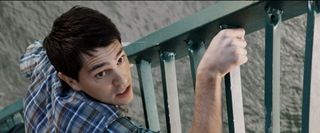
And how much does 3D come into that process?
Well the thing with 3D right now, we’re kind of in the early stages of 3D in the sense that we have these really big bulky cameras because we have these new cameras that are full-frame sensors that look fantastic, but because of that they are really heavy and bulky. Whereas in Avatar we had smaller cameras that were actually a little bit more manageable to work with. So when you have such a big camera, you just have to plan ahead more in advance because if you have a big camera and have to change the lens, and it takes a few minutes to do that, you have two cameras, and so you have the other camera set up in advance so that you can get your next shot. You have to be thinking ahead. You can’t just, you know, in a regular 35mm film you can just swap a lens, shoot it, and then there’s your close up. On this we have to have the B-camera ready for the close up, so just more pre-planning.
When you’re in that planning process, does it all kind of come second nature?
Yeah. Sometimes I’ll change things, when you’re on set, sometimes things organically just work better this way. You just have to be careful about budgeting your time.
Do you think that there’s any risk of being over-prepared?
No, I actually don’t. To be honest, you can be over-prepared and, well you can’t be over-prepared, prepare for everything. But there is a risk, is if you’re militant in not being flexible. If the staging and the location and the cast give you something that you just throw out everything you prepared. There were days where I completely threw out the concepts I originally had because I came up with a way better idea of doing it, and it just organically flew, and it all works. You have to be very prepared but at the same time you have to be flexible in what you’re going to do on the day.
In that respect, just in terms of throwing ideas away, when you came on, how much did the script came from the beginning to the final cut?
Well it’s interesting because our big climax at the end of the original script changed because we couldn’t find a location in Vancouver that had the train station. It was a big, elaborate train station sequence, and we just couldn’t find a location, so it was impossible to shoot that there. So then we thought, well what other locations can we do? I worked really closely with Craig Perry and Eric, the writer, and to the point where we changed it to a kitchen. Things like that. Still the same beats, but it was a different location. There are other parts, there were some deaths that were tweaked and adjusted, but for the most part, the basic structure remained intact.
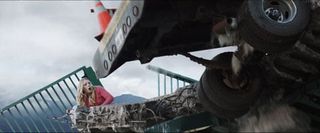
Was Nicholas D'Agosto’s character always going to be a cook?
No, well, the cook was also another interesting thing because originally, one of the supporting characters, Nathan, was the cook. As we went along with the process, we found, well hey, it’s more interesting if our main character was the cook because we had too many characters. We had an additional character as well, it was a little too much of an ensemble, just one too many characters. So in restructuring it, we came up with the idea of having the main character be the cook and then that dictating that it makes sense for the climax to be in the kitchen where he works. All these things kind of, because it’s really tough, especially when you have the deaths and the order of the deaths, if you start screwing around with that early on in the premonition, then it all has to relate and tie back to the other thing, it’s just a really kind of complicated string of events that you have to keep intact.
I’m just curious, because you’re just coming to this franchise, is there a written set of rules that you have to follow?
Well you have to be true to the original source material, give the fans what they want, what they expect. They are expecting unusual deaths that come in a horrific manor and shock them. What you do in between that is wide open as long as you don’t alienate them. My feeling was lets elevate it to a little higher from an aesthetic standpoint, let’s get the casting and the actors as good as we possibly can, and organic to the story, have the actually have goals and ambitions besides just waiting for death to hit them, so you can follow their story and inject some humor in it. But it is something that I think is open, there’s plenty of stuff to be open to and to take, you know, my take and how I’m gonna do it. But at the same time, if you provide them with those shocking moments and that horror, that’s what they’re coming to see, to have fun.
When you’re dealing with exposition, because this is the fifth one, people have seen it and know what’s going on, did you find that you were able to kind of ease up on that?
Well, you have to explain the concept. My feeling was, we have to do this for someone who’s never seen this, just to be safe, because you never know if the people are going to be new or the fans. So I think you have to balance that and make it work. But my feeling has always been, the minimal exposition you can get in a movie the better, but at the same time, you don’t want it to be confusing, so that’s the balance.
And I’m sure if helps to have Tony Todd there.
He was great, just fantastic.
I mean, just the fact that he’s a horror icon.
And it was just fun, too. All the scenes with him were great.
Just to wrap up, do you know what’s coming down the pipeline?
You mean as far as Final Destination goes?
Well, as Final Destination goes, future projects...
I’ve been in talks, I’ve got all kinds of projects going, there’s lots of great buzz and excitement. To answer your question about what I want to do next, I don’t know, but as far as Final Destination, it’s up to the fans. If they embrace this, who knows what will happen in the future.
Would you be happy to come back?
Sure, I loved it, it was great.

Eric Eisenberg is the Assistant Managing Editor at CinemaBlend. After graduating Boston University and earning a bachelor’s degree in journalism, he took a part-time job as a staff writer for CinemaBlend, and after six months was offered the opportunity to move to Los Angeles and take on a newly created West Coast Editor position. Over a decade later, he's continuing to advance his interests and expertise. In addition to conducting filmmaker interviews and contributing to the news and feature content of the site, Eric also oversees the Movie Reviews section, writes the the weekend box office report (published Sundays), and is the site's resident Stephen King expert. He has two King-related columns.
Most Popular






